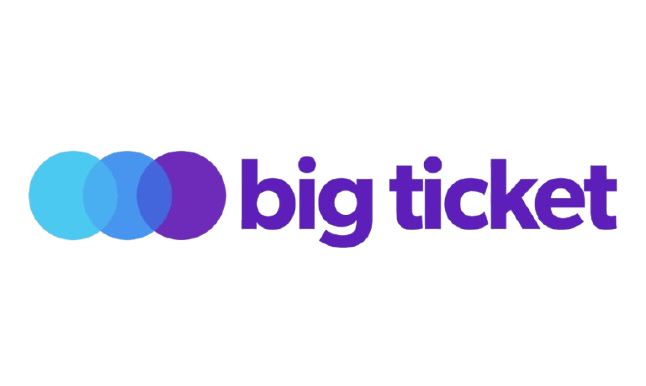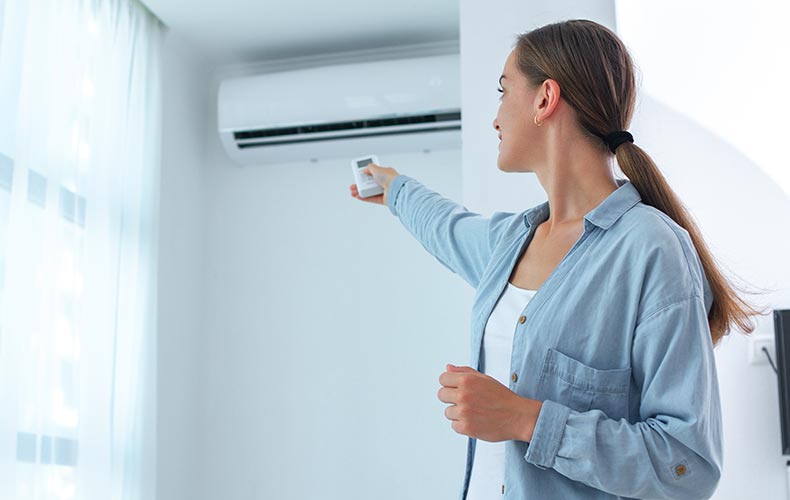Buying a home? Beware of hidden costs that go beyond the purchase price. This article will explore expected expenses like budgeting for regular home maintenance and repairs, as well as unexpected expenses like closing costs, property taxes, and ongoing maintenance. Learn about the hidden costs of homeownership to help plan your finances.
Key Takeaways
-
Expect additional costs like closing fees (2-5% of the purchase price) and set aside savings early to avoid financial surprises.
-
Property taxes, homeowners insurance, and HOA fees can significantly impact your budget; research these costs beforehand to plan accordingly.
-
Budget for ongoing expenses like utilities and maintenance, and create an emergency fund to manage unexpected repairs and changes in your new home.
-
Consider the importance of flood insurance, especially in areas prone to natural disasters, as standard homeowners insurance may not cover flood-related damages.
Closing Costs
The initial payment for a home purchase is merely one part of the financial equation. Additional costs that new homeowners need to anticipate are closing costs, which typically range from 2% to 5% of the home’s buying price. This includes charges for appraisals, inspections, and legal assistance. These can accumulate rapidly and may lead to an unexpected shock when not adequately prepared.
Imagine stepping into your real estate agent’s office fully prepared to finalize the deal, only to be met with unforeseen fees and expenses. To avoid this situation and circumvent hasty financial decisions at the last moment, it is advisable to save up in advance specifically designated for covering these closing costs.
By addressing anticipated expenses early on in the process of becoming homeowners, can significantly simplify entry into property ownership. It’s crucially important you speak with your real estate agent about potential closing costs so that you have a comprehensive understanding of what your final payments will likely entail. Preparing ahead serves as both stress relief and assurance towards achieving a seamless transaction during your home acquisition journey.
Property Taxes
New homeowners may be surprised by the substantial cost of property taxes. Typically determined by the local tax rate and your property’s assessed value, these taxes are frequently incorporated into monthly mortgage payments via an escrow account. As a result, your payment towards the mortgage will encompass principal, interest, taxes and insurance (PITI).
For the average homeowner, property tax can amount to a hefty yearly expense. To anticipate what you might owe and plan your finances effectively without any unexpected shocks when tax time arrives, it is wise to look up estimated payments on your local government’s website dedicated to property tax collection.
Homeowners Insurance and Mortgage Insurance
If you’re a homeowner with a mortgage, securing homeowners insurance is essential as it covers both property damage and liability concerns. This type of insurance, which is often factored into your monthly escrow payment, must be in place prior to finalizing the home purchase, and may necessitate additional coverage for valuable personal items like jewelry through specific policy additions.
Should your down payment on the house be under 20% of its buying price, mortgage insurance will then become obligatory. This ensures that the lender’s investment is safeguarded should you default on payments. Despite seeming like an added expense, this form of insurance makes acquiring a home possible without requiring a substantial initial payment.
Having knowledge about these insurances and their respective costs is crucial for planning your finances wisely. Acquiring adequate coverage not only safeguards your financial interests, but also gives you peace knowing that both your obligations are being met responsibly.
HOA Fees and Special Assessments
Joining a community governed by a homeowners association (HOA) requires readiness to handle periodic HOA fees. These dues are allocated for the upkeep of communal spaces and services, which can include landscaping, snow removal from common areas, and general maintenance. The amount charged for HOA fees falls between $50 and $500 depending on the scope of amenities and services provided.
It’s important to note that high HOA costs might impact the attractiveness of your property when you decide to sell since prospective buyers will take these expenses into account during their decision-making process. Homeowners should also be aware that they may encounter special assessments levied for unforeseen repairs or significant enhancements not included in the regular hoa fee schedule.
For those purchasing a home for the first time within an HOA-regulated community, it is wise to assess the financial stability of the association early on. This foresight helps prevent unanticipated expenditures while assisting in maintaining adherence to one’s personal financial plan.
Utility Bills and Maintenance Costs
New homeowners may not always consider utility bills, which encompass:
-
Electricity
-
Gas
-
Water
-
Waste disposal services
The sum of these expenses can quickly add up, typically ranging based on factors such as the size of the home and local utility rates. This makes it crucial for new homeowners to anticipate and budget for them accordingly.
Another essential expense for new homeowners to incorporate into their budget is routine maintenance costs. Consistent upkeep helps avert expensive emergency repairs later on. It’s recommended to allocate a monthly amount between $200 and $600 for this purpose. Additionally, budgeting for the replacement and repair of heating and cooling systems is crucial, as these systems have significant costs associated with their lifespan and maintenance.
Unforeseen repair expenditures related to plumbing, roofing, or electrical problems can impose significant financial challenges. To manage these unpredicted events effectively and ensure that you’re prepared for necessary fixes without economic hardship, it’s prudent to sustain an emergency fund.
Landscaping Services and Pest Control
Caring for your lawn involves more than just an affinity for gardening. It’s important to allocate funds for the purchase of new tools and the consistent acquisition of necessary materials. Opting for expert landscaping services means you should anticipate ongoing costs, such as charges incurred from services provided every two weeks.
There are concealed expenses like preventative pest control measures. Investing modestly in early pest management can protect against future issues that may be much more costly. To identify reliable and economical choices, it is beneficial to assess different service providers and seek advice from individuals living nearby who might offer endorsements based on their experiences.
Unexpected Expenses and Emergency Fund
Ensuring you have funds set aside for unforeseen expenses is a key aspect of owning a home. It’s vital to establish an emergency fund dedicated to substantial repairs or replacements, with the goal of putting away 1% to 4% of your property’s value each year specifically for maintenance and urgent repair needs.
Homeowners typically incur significant costs in emergency repairs and may spend a substantial amount on various repairs and updates during their first year as owners. In the absence of adequate savings for these expenses, borrowing money might become necessary to cov such costs.
An effective tactic for accumulating savings involves setting aside one dollar per square foot of living space within your home. By adopting this strategy and taking into account elements like the size, location, and age of your residence can greatly contribute towards creating a solid emergency fund that allows efficient handling of home maintenance finances.
Home Furnishing
Outfitting a new residence necessitates a substantial financial outlay, notably for those acquiring their first home and having to buy an array of items including appliances and furnishings. These expenses can accumulate rapidly. It is critical to incorporate them into your comprehensive home spending strategy.
Outfitting your home with the right essentials can be overwhelming—but Big Ticket makes it effortless. Our platform lets you save products you’re considering, compare prices from multiple retailers, track price trends over time, and review aggregated feedback—all in one place. Whether you’re shopping for a refrigerator, a new sofa, or kitchen essentials, Big Ticket helps you make informed buying decisions and find the best deals without the stress of endless searching.
Mortgage Payment and Insurance
Mortgage payment and insurance are two of the most significant expenses associated with homeownership. A mortgage payment typically includes the loan payment, property taxes, and insurance. Mortgage insurance, also known as private mortgage insurance (PMI), is usually required for borrowers with low down payments. Homeowners insurance, on the other hand, protects against damage or loss to the home and its contents.
When budgeting for mortgage payment and insurance, it’s essential to consider the following factors:
-
Loan term: A longer loan term may result in lower monthly payments, but you’ll pay more in interest over the life of the loan.
-
Interest rate: A lower interest rate can result in lower monthly payments and less interest paid over the life of the loan.
-
Property taxes: Property taxes can vary significantly depending on the location and value of the property.
-
Insurance premiums: Homeowners insurance premiums can vary depending on factors such as location, value of the property, and level of coverage.
To save money on mortgage payment and insurance, consider the following strategies:
-
Make a larger down payment to avoid PMI.
-
Shop around for insurance quotes to find the best rates.
-
Consider a shorter loan term to pay less interest over the life of the loan.
-
Look for ways to reduce property taxes, such as appealing the assessed value of the property.
By understanding these factors and implementing these strategies, you can effectively manage your mortgage payment and insurance costs, ensuring a more stable financial future.
Budgeting for Homeownership
Budgeting for homeownership involves creating a comprehensive plan to manage all the expenses associated with owning a home. Here are some tips to help you create a personalized budget:
The 50/30/20 Rule
The 50/30/20 rule is a simple and effective way to allocate your income towards different expenses. The rule suggests that:
-
50% of your income should go towards necessary expenses such as mortgage payment, property taxes, insurance, and utilities.
-
30% towards discretionary spending such as entertainment, hobbies, and travel.
-
20% towards saving and debt repayment.
Creating a Personalized Budget
To create a personalized budget, follow these steps:
-
Track your income and expenses: Start by tracking your income and expenses to understand where your money is going.
-
Categorize expenses: Categorize your expenses into necessary, discretionary, and savings.
-
Set financial goals: Set financial goals such as saving for a down payment, paying off debt, or building an emergency fund.
-
Allocate funds: Allocate funds towards each category based on your goals and priorities.
-
Review and adjust: Review your budget regularly and adjust as needed.
Some additional tips to keep in mind:
-
Consider using the envelope system to allocate funds towards different expenses.
-
Automate your savings by setting up automatic transfers from your checking account.
-
Review your budget with a certified financial planner to get personalized advice.
By following these steps and tips, you can create a budget that helps you manage the costs of homeownership effectively, ensuring financial stability and peace of mind.
Summary
Navigating the hidden costs of homeownership can be challenging, but with proper planning and budgeting, you can avoid financial pitfalls. From closing costs to unexpected repairs, being aware of these expenses and setting aside savings can help you manage your home spending effectively.
By taking proactive steps, you can enjoy the benefits of homeownership without the stress of financial surprises. Remember to plan ahead, budget wisely, and use tools like Big Ticket to make informed decisions.
Frequently Asked Questions
Are the hidden costs of owning a home skyrocketing?
Yes, the hidden costs of owning a home are indeed skyrocketing, averaging over $18,000 annually, which is a 26% increase in the past four years due to rising insurance rates, utilities, and maintenance expenses.
It’s becoming increasingly important for homeowners to budget for these growing costs.
What are closing costs, and how much should I expect to pay?
Closing costs are expenses on top of your down payment, usually between 2% and 5% of the home’s price.
So, if you’re buying a house, be prepared for these additional costs like appraisals and inspections!
How are property taxes calculated, and how do I pay them?
Property taxes are calculated based on your property’s assessed value and the local tax rate.
You can usually pay them through an escrow account as part of your monthly mortgage payment.
What is the difference between homeowners insurance and mortgage insurance?
Homeowners insurance protects your home and belongings from damage, plus covers liability, while mortgage insurance safeguards the lender in case you default, especially if your down payment is under 20%.
So, they serve different purposes—one for your peace of mind and the other for the lender’s protection.
What are HOA fees, and what do they cover?
HOA fees are monthly or yearly charges that cover the maintenance of community areas and amenities like landscaping and snow removal. Depending on the community, these fees can range from $50 to $500.
- Tags:
- Shopping Tips






